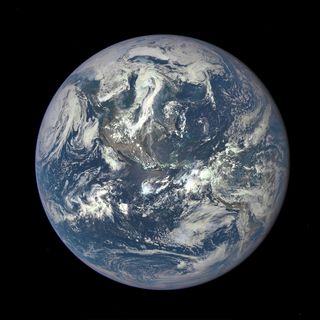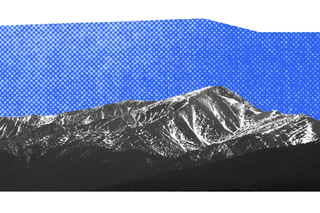
Ancient Single‑Celled Organisms May Have Helped Form Mountains on Earth
The research demonstrates the “Earth and its biosphere are intimately linked in ways not previously understood.”

In the beginning, there was an explosion. Not of the pyrotechnic variety, but of life itself — when two billion years ago, the “Great Oxidation Event” led to a sudden abundance of single-celled marine organisms in the oceans. Now, new research found that these tiny beings were responsible for the creation of some of the mightiest mountain ranges on Earth, including the Himalayas.
The finding suggests that “the key to the formation of mountains was life” itself, according to geologist John Parnell from the University of Aberdeen in Scotland,and lead researcher of the study.
The study, published last week in Nature journal’s Communications Earth and Environment reveals stunning insights into how the Earth’s geology and biosphere are interconnected — far more than we previously would have assumed.
Mountain formation is typically associated with colliding tectonic plates, when pieces of Earth’s crust and weaken. But the new study found that an abundance of oceanic life was the key in triggering these collisions.
Researchers studied 20 mountain ranges across the world, spanning different continents — these included the Himalayas, the Rockies in North America, the Andies in South America, Svalbard in Norway, and other Indonesian and Japanese mountain ranges. What they found common to all was that there was a peculiar layer of slippery graphite that seemed to have a biological origin.
Research has also shown that graphite was a necessary ingredient in the mountain formation process; but little was known about how this process exactly happened.
The series of events went something like this: when there was a surge of oxygen on Earth, single-celled marine organisms began to inhabit the oceans, replacing previous anaerobic lifeforms. When these new marine organisms died, they sunk to the ocean floors, creating a layer of organic carbon there. This carbon-rich sediment would turn out to be important — eventually forming graphite, it weakened the Earth’s crust and in turn, the tectonic plates that are essential for orogeny, or mountain formation.
As a result, “much carbon became locked into the geological cycle” during the Paleoproterozoic era, the longest geological era of Earth’s history which was roughly 2,500 to 1,600 million years ago. This carbon “left a legacy for mountain building through subsequent geological history,” according to the study.
Related on The Swaddle:
Pink Ice in the Alps Is Not a Natural Wonder, but an Environmental Danger
Graphite is a slippery form of carbon — seen in pencil lead today — that acted as the “lubricant” to allow tectonic movement and breakage of rocks. This promoted more crust “stacking” and subsequent thickening during mountain formation.
“While it has long been known that tectonic processes were lubricated, our research shows that it was the sheer abundance of carbon in the ocean that played a crucial role in the crustal thickening that built the Earth’s mountain ranges,” Parnell noted.
In these patches of weakened crust, in other words, tectonic plates slipped over or under one another while colliding. Over a span of 100 million years, the process led to the emergence of the great mountain ranges that we know today.
It is this expansive time period that allowed researchers to deduce the link. “An analysis of the time interval between the burial of organic carbon and orogeny indicates that the developments of high biomass and plate tectonics are linked. The additional carbon allowed easier deformation of the crust, in a manner that built mountain belts,” the paper stated.
Significantly, the study found that this process continues to influence mountain formation even to date. “The exceptional Palaeoproterozoic biomass was thus reflected not only in mountain building during the Palaeoproterozoic, but also in mountain building ever since,” the researchers wrote.
The implications of the study are significant. “[T]he Earth and its biosphere are intimately linked in ways not previously understood,” Parell stated. Further, the authors noted that graphite in the Earth’s crust is in high demand for green technology.
“It’s interesting to think that this two-billion-year-old event which was responsible for shaping our natural world now has the potential to play a key role in its preservation for future generations,” said co-author Connor Brolly, from the University of Glasgow.
Indeed, understanding the connections between our past and present, and between life and landscape, may hold the key to unlocking the secrets of the Earth and its preservation too. The key, it appears, is modest, tiny organisms that played a mighty part in the story of our world.
Rohitha Naraharisetty is a Senior Associate Editor at The Swaddle. She writes about the intersection of gender, caste, social movements, and pop culture. She can be found on Instagram at @rohitha_97 or on Twitter at @romimacaronii.
Related


Women Athletes Faced ‘Disturbing Level’ of Online Abuse During Tokyo Olympics: Survey
